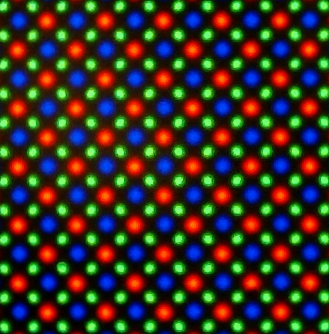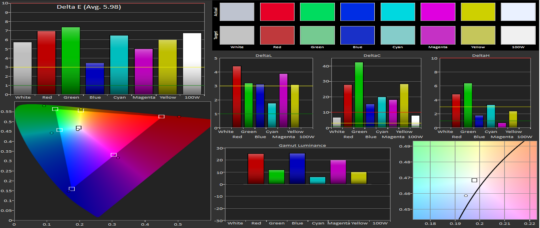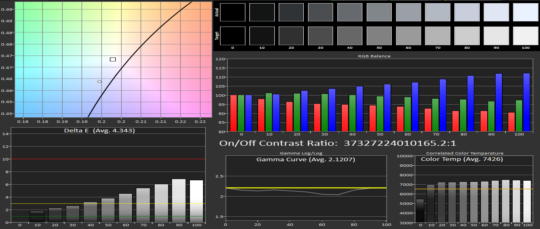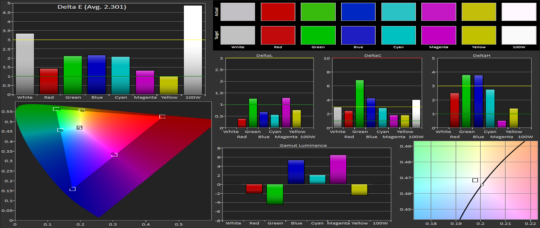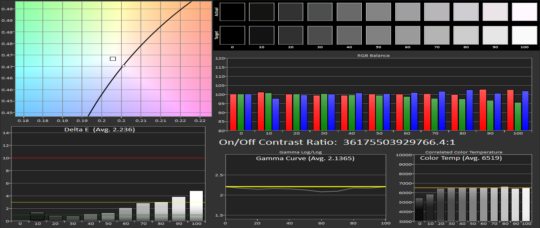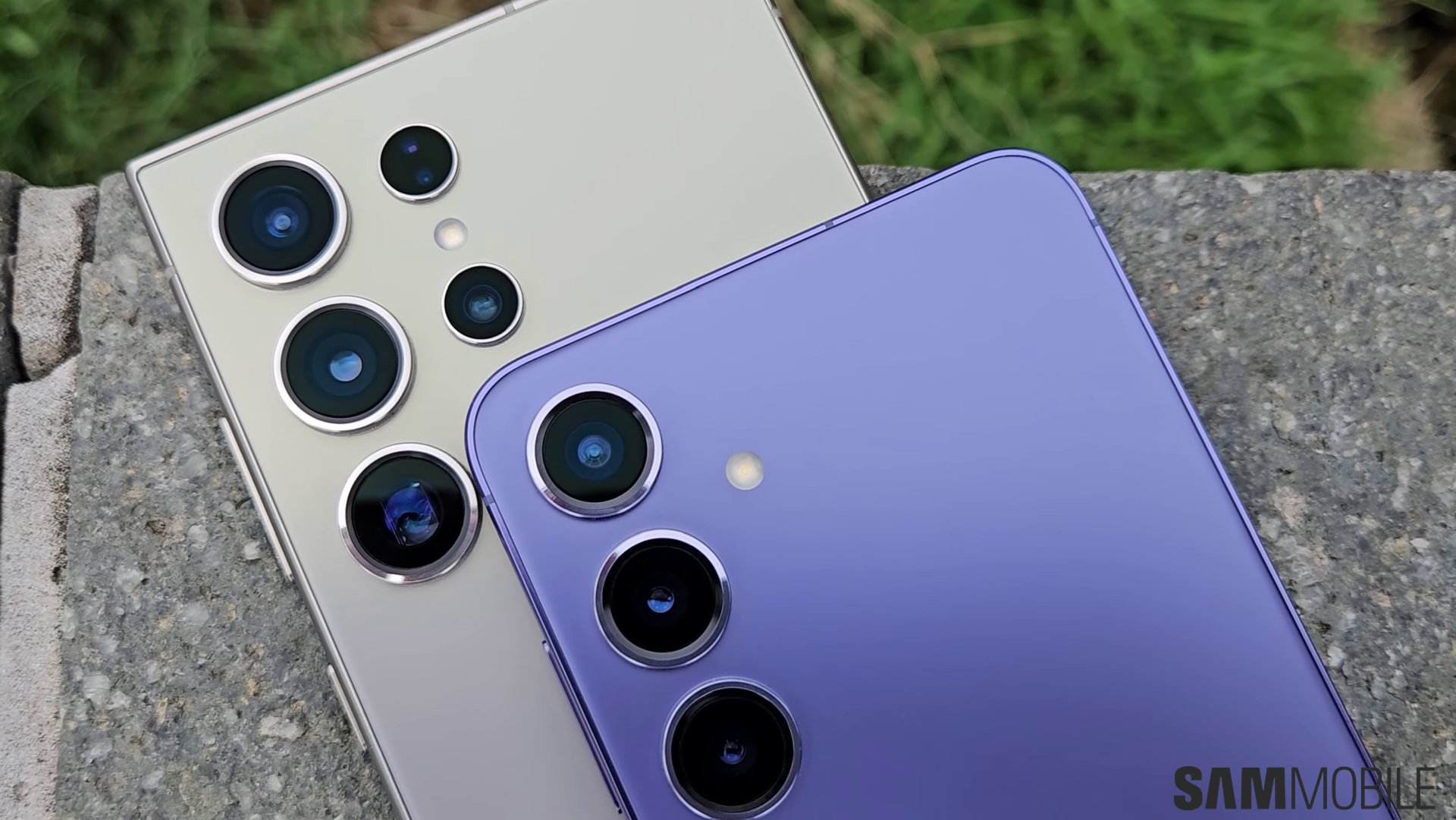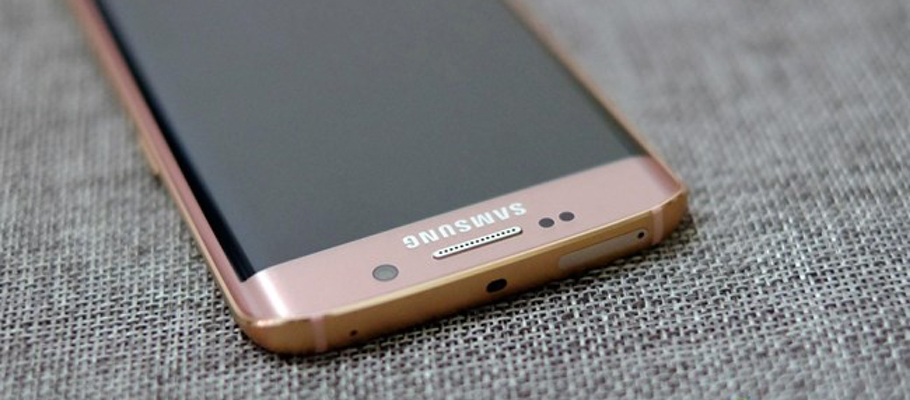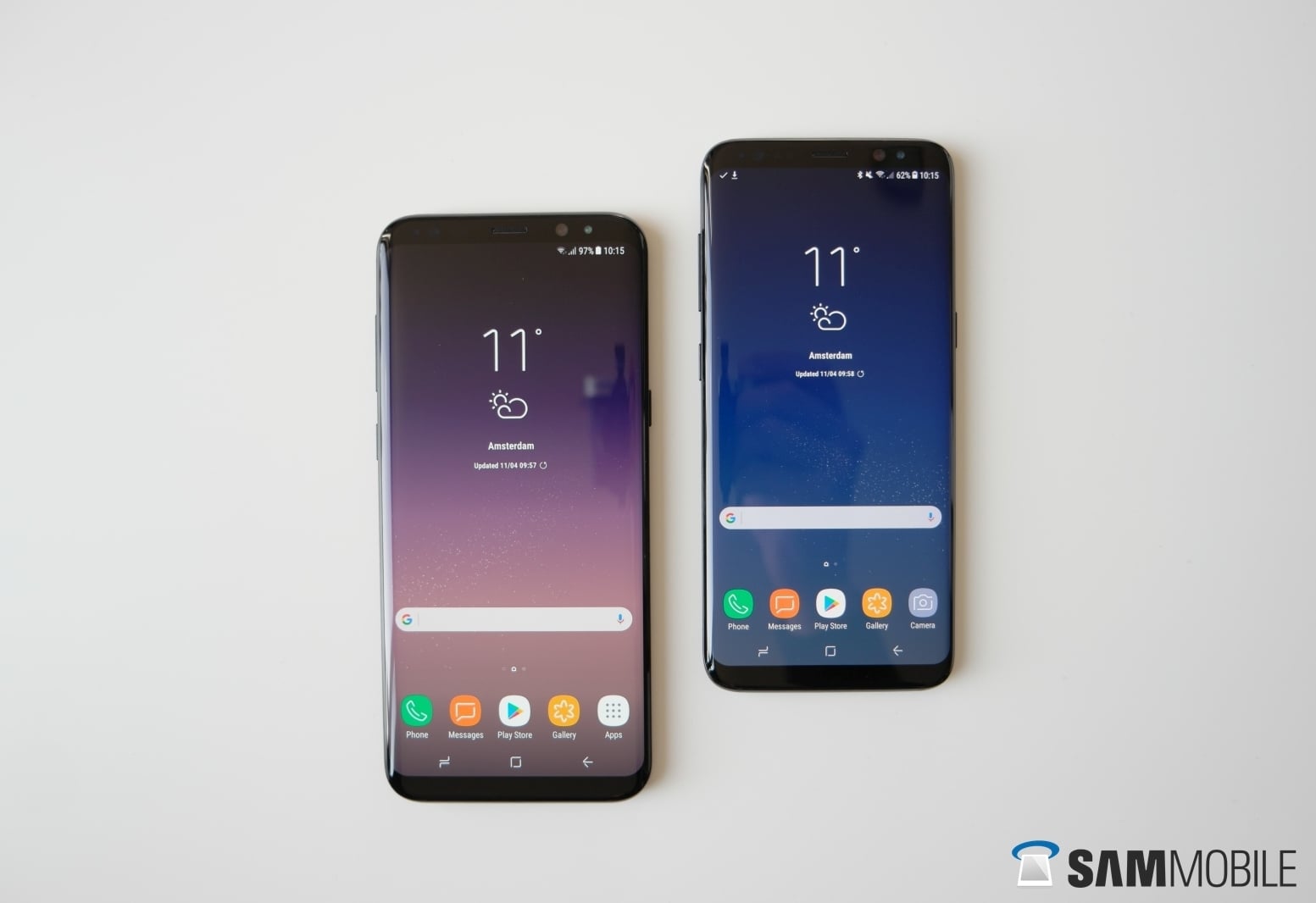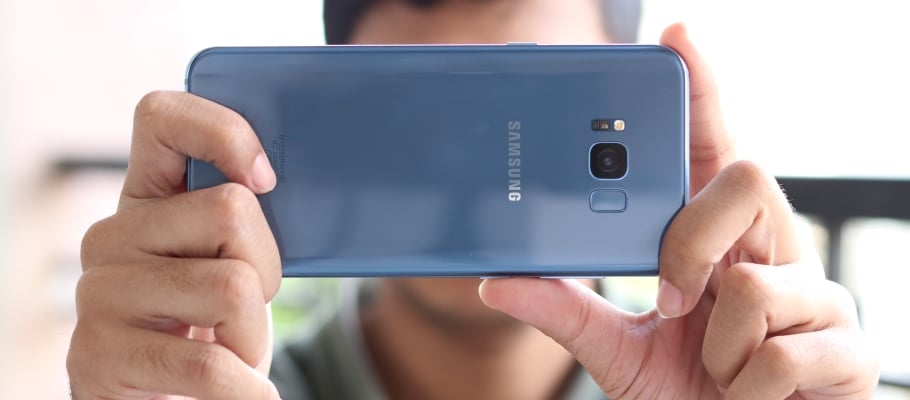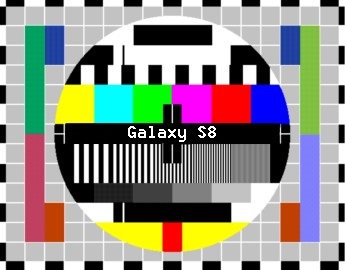
Samsung launched the new Galaxy S8 last month, and we recently tested the Galaxy S8's display to see how it measures up. The Galaxy S8 has a new virtually bezel-less screen, the so-called Infinity Display, so let’s find out what this phone brings to the table in terms of the viewing experience. We tested the screen in the Adaptive mode, which is the default display mode, and also in Basic and AMOLED Photo modes.
If you want to know what the graphs in this measurement mean, please refer to this post.
First, some basic stuff. The Galaxy S8 sports a 5.8-inch Super AMOLED display with Quad HD+ (2960×1440 pixels) resolution, a pixel density of around 570 PPI, and the weird aspect ratio of 18:9::5. It rocks the infamous Diamond PenTile pixel layout, which you can see in the close-up picture below
Brightness Levels
First things first, the screen has a maximum brightness of around 447.70 cd/m2 (nits) in manual brightness setting, and 693.21 cd/m2 in auto brightness. At the dimmest setting, the screen can go as low as 1.88 cd/m2 in auto brightness mode, and as low as 1.96 cd/m2 in manual brightness.
Adaptive Display
When we look at its color gamut and the colors in the sRGB color space, we can conclude that every color misses its target point and the screen is thus oversaturated (a common theme on AMOLED displays). The white point is pretty much off target, which you can see in the graph on the right side below. The margin of the displayed primary and secondary colors isn’t that good, with a Delta E error of 5.98 being too high, which is something we see all the time in this screen mode.
The error of the Grayscale color is not too great at 4.34 (although it is a tad better than Samsung's other displays which were around 5 or 6) and the whites are bluish here as well; that is something manufacturers do to make the whites look more white, especially on AMOLED displays. The contrast ratio, however, is unmeasurable so that is extremely good. Blacks are really black, yet when we get to the lighter colors we see that blueish tint popping out as red and green deteriorates. This is something you can see in the color temperature as well, with a temperature of 7426 being too cold (and 6509 is the sweet spot).
Basic Mode
Like with all the display from Samsung, we aren’t a fan of Adaptive mode (though some of us don’t exactly mind using it), but we have the option of changing it to Basic mode. The basic mode is the closest you can get to a nicely calibrated screen, though the display can look a little dull when you first lay your eyes on this screen mode. In the sRGB color space, it scores great as it hits most of the targets, with the margin of the displayed primary and secondary colors having a Delta E error of 2.3 which is good. The white point is just a little off center, but nothing too serious.
It’s a similar story in grayscale, although we see red and a little bit blue popping up a little in the lighter colors, which results in a warmer screen and that is something you can see at the color temperature as well. With a color temperature of 6519, it is a lot closer to 6509, which would be the best score. The margin of color error in Grayscale of Delte E 3.5 is good but not better than other Basic Modes we measured before; for example, the Galaxy A8 had a Delta E of 1.5 in the Grayscale color error. Its contrast here in Basic Mode is unmeasurable as well so that is extremely good.
AMOLED Photo
The mode I always set my screen to is AMOLED Photo, this gives you the punchiness of the Adaptive Display mode without making it feel too much. As you can see that the Delta E color error is only 2 points higher than the Basic Mode and somewhat 2 points lower than Adaptive Mode. A funny detail here is that the Grayscale color error is almost the same as in the basic mode and its color temerature is almost the same. A first!
Conclusion
The scores of the Galaxy S8 are exceptionally good and we see another great example of why Samsung is still the king of displays. Excellent scores all the way around, and if we take a look at last year's Galaxy S7, then we see an all around improvement. Yet again, it's an achievement for Samsung, as the Galaxy S7 and S7 edge displays were already quite great.












